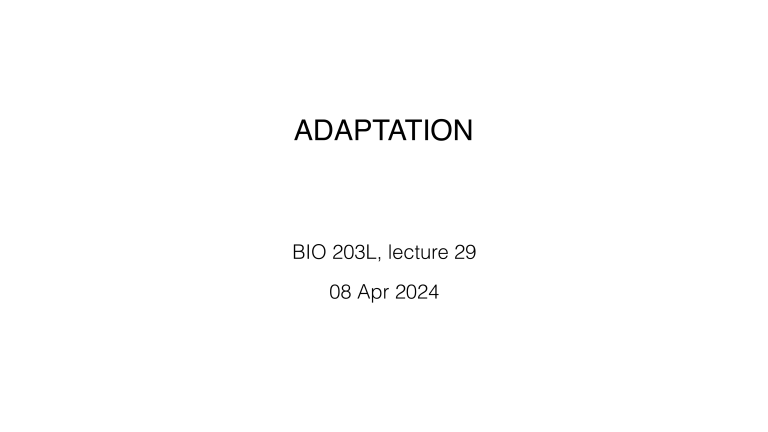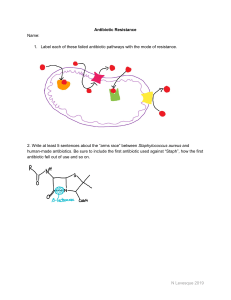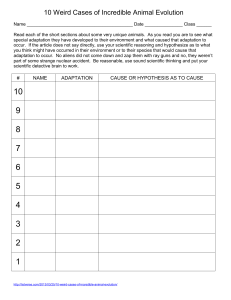
ADAPTATION BIO 203L, lecture 29 08 Apr 2024 Darwin’s big question How do organisms become so well matched to their speci c environmental circumstances? Desert and rainforest plants fi fl Arctic Fox and Willow Ptarmigan Leaf and ower mimics Darwin’s question How do organisms become so well matched to their speci c environmental circumstances? eBird and Petr Simon Possible answers: Magic Species move into suitable habitats Species adapt to local environments fi fl Sword-billed Hummingbird and Datura owers Adaptation is inevitable if . . . A population contains genetic variation Some of that genetic variation in uences traits Some traits are more advantageous than others in that environment adaptation frequency population in generation n + 1 population in generation n fl trait value Learning objectives • Understand how populations respond to changes in the environment • Understand how to distinguish directional selection from drift • Understand the genetic basis for some examples of adaptation • Learn how to predict responses to selection using the breeder’s equation • Understand how continued adaptation leads to phenotypic divergence Case study: antibiotic resistance Evolution of antibiotic resistance in real time: experimental set-up E. coli increasing antibiotic concentration Gigantic “petri dish” 60 x 120 cm (~ 2 x 4 ft) with antibiotic in increasing concentrations Inoculated at extreme ends with E. coli that completely lack drug resistance Recorded images over 12 days of bacterial growth —> converted into a movie Baym, B, et al. (2016) Science 353:1147-1151 Mark Rausher Science E. coli Evolution of antibiotic resistance in real time: experimental set-up Bacteria added in stripes on plate ends Quickly ll no-antibiotic zone up to “wall” A few break into 1X zone but most can’t Early 1X invaders expand and hit next “wall” Additional cells break into 1x zone Mark Rausher A few break into the 10X zone fi fi 1x zone starts to ll up … and so forth Science Evolution of antibiotic resistance Progressive mutations allow adaptation to highest concentration 1000X 100X Science 10X 1X 0 Each invasion into the next highest concentration happens at speci c locations Those locations correspond to clones of cells carrying a new adaptive mutation fi Mutant cells invade and use resources, crowding out later mutants that also invade Science Is progressive adaptation faster? One big step from no antibiotic to 3000X takes the longest (left; 250 hours) Having an intermediate step always speeds up adaptation to 3000X (other 3 panels) Step size matters; best is having intermediate step sizes that increase by 10X



